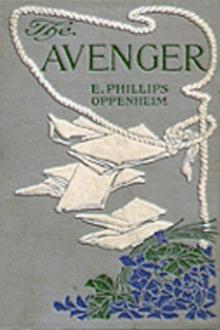Hitler's Terror Weapons, Brooks, Geoffrey [cat reading book .txt] 📗

Book online «Hitler's Terror Weapons, Brooks, Geoffrey [cat reading book .txt] 📗». Author Brooks, Geoffrey
The only possible explanation for the foregoing is that Zinsser, whoever he was, saw the test of a 1-kiloton lead-jacketed German atom bomb and so, if there ever was such a thing, Hitler’s scientists won the race to the atom bomb.
CHAPTER 10
The Sands of Time Run Out
“The Germans were preparing rocket surprises for England in particular, which would have, it is believed, changed the course of the war if the invasion had been postponed for so short a time as half a year,” Lt-Gen Donald Leander Putt, Deputy Commanding General, US Army Air Force Intelligence, told the Society of Aeronautical Engineers in a speech in 1946. Since he was speaking here of rockets, Lt-Gen Putt was implying that forcing the Germans back to their own frontier by December 1944 was critical to the Allies not losing the war. In December 1944 the Germans launched a military operation, the purpose of which no historian has explained satisfactorily: the Ardennes offensive, which began on the 16th of that month. Hitler’s motorized forces were to bear down on Antwerp with the intention of recapturing the port. For the purpose he had released huge quantities of fuel and ammunition and transferred the bulk of his panzers from the East. Two full divisions – one SS and one Wehrmacht – were deployed. Secrecy was absolute. Hitler’s Luftwaffe ADC von Below remarked in his 1982 memoirs that even he could not understand why Hitler wanted to go to Antwerp – “a place that led nowhere”. And at the same time orders were placed with naval shipyards at Stettin and Elbing in the Baltic for twenty-four 500-ton submersible barges able to transport and launch V-2 rockets. Antwerp was a sea port. Antwerp was 200 miles from London. The maximum range of a V-2 was 200 miles. Launched from a submersible barge, a V-2 could hit London from the River Scheldt on which Antwerp stood. Here we begin to see the logic. But the V-2 campaign had been a failure. Hitler knew that. There had to be something extra to make all this worthwhile.
In an aside to accredited journalists Kurowski and Romersa it is alleged that Lt-Gen Putt had added, “The Germans had V-2s with atomic explosive warheads”. Hitler told Otto Skorzeny106 that the whole point was to introduce “a new and really revolutionary weapon which would take them utterly by surprise” – the same expression as used by US Lt-Gen Putt in his speech. If the Uraniumbombe was ready, and he now had the deadly warhead mass-produced to fit into his V-2s, then the picture makes some kind of sense at last. In this new campaign every V-2 arriving from the heavens on London at Mach 3.5 would crush into a critical mass on impact a sphere in its nose or waist filled with half a tonne or so of plutonium-enriched uranium powder. The assembling of the material, though instantaneous, lacked symmetry, and so a full chain reaction would not develop, but there would certainly be a “fizzle” equivalent to up to 50 tons of TNT, meltdown and fallout. And every V-2 would bring the same punishment until Britain pulled out of the war and all troops of the western Alliance departed from the European mainland. It was a bold plan.
Once it was obvious that the Ardennes offensive had failed, Hitler admitted defeat to his Luftwaffe ADC107 in terms similar to, “I know the war is lost. The enemy superiority is too great.”
Horten Ho XVIII bomber
Before the war the first Chief of the Luftwaffe General Staff, Wever, had demanded a fast, four-engined bomber. The initial designs, the Ju 89 and Do 19, had flown but were either scrapped or relegated to other duties, and Goering had abandoned the four-engined series subsequently in favour of the Ju 88. This was due partly to the raw materials situation but also to the fact that double the number of two-engined machines could be manufactured, which looked good in the production figures. Goering was therefore the party responsible for the decision not to have a long-range bomber fleet, and in the upshot it was probably fatal for Hitler.
At the end of 1944 the development of new types of bomb for use against the United States from Germany and possibly from bases in Japan kick-started a bomber-building programme into life.
An aircraft specifically built as an atomic-type bomb carrier108 was the Horten XVIII, although its designers were not made aware of that fact until after the war, its purpose being camouflaged by the Luftwaffe as the maritime anti-convoy role. The RLM requirement drawn up in mid-1944 stipulated a radius of action of 9000 kms, enabling the aircraft to make the round trip from Germany to New York without refuelling, carrying an outward bomb load of 4 tonnes. This payload would be about right for a German ‘atomic-type’ bomb with a 500-kilo core, most of the rest being casing and the conventional explosive needed to implode the device. At a conference of top aircraft manufacturers in the autumn of 1944, Messerschmitt, Focke-Wulf, Blohm & Voss, Junkers, Arado and Heinkel were invited to tender designs, but when submitted none were able to meet the radius of action, particularly after the figure of 9000 kms had been increased to 11000 kms.
Reimar and Walter Horten were not in the mainstream of aircraft manufacture. Before the war their specialist field had been unpowered gliders of very high aspect wing ratio. Their design with a glide





Comments (0)